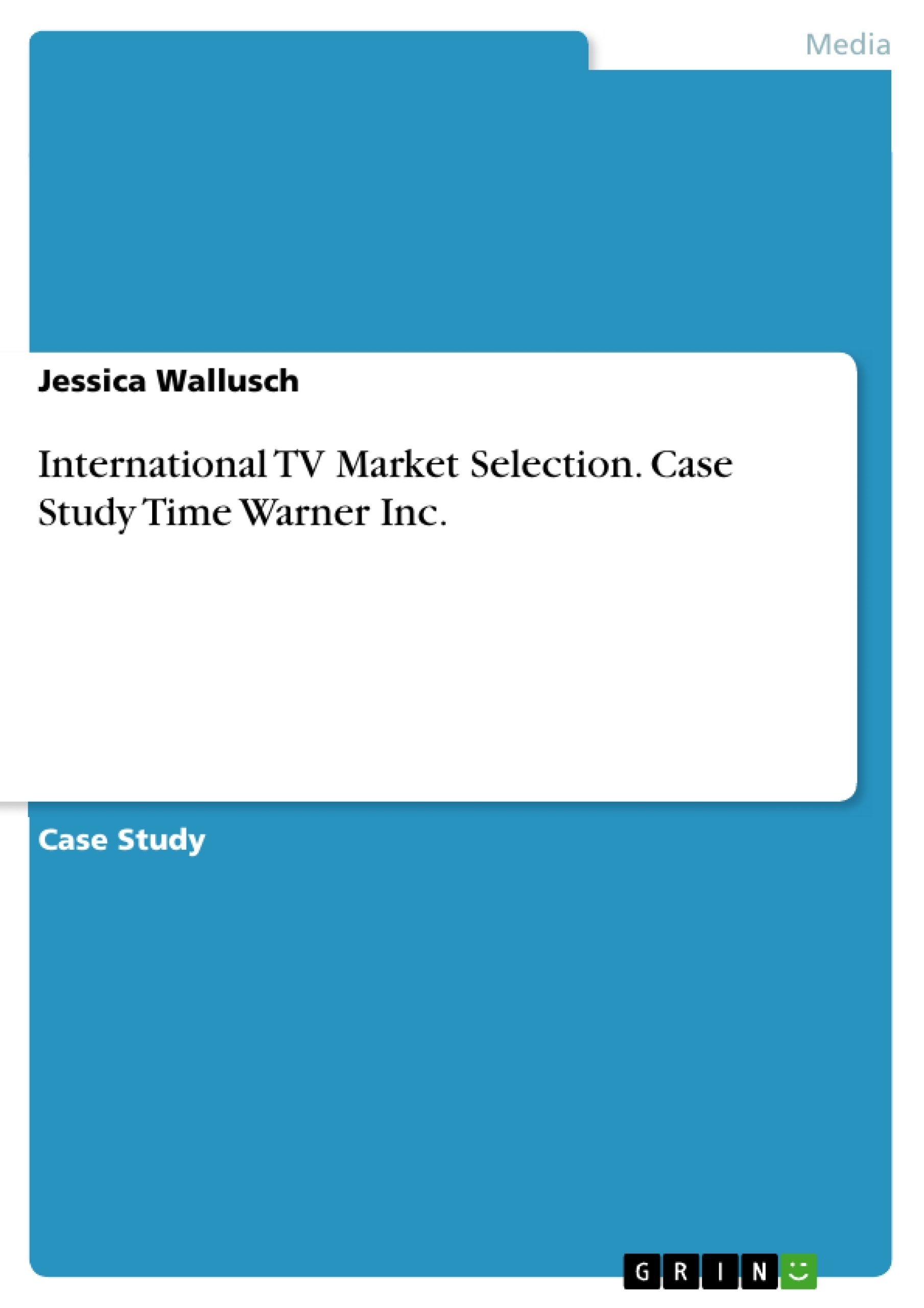This paper deals with the question which country fulfills the necessary requirements to be taken into consideration by Time Warner Inc. as they want to expand onto the European market. We will only use data that are related to the television market and that cover Time Warner’s Networks segment as well as their filmed entertainment segment.
Furthermore, this case study will focus on the pay television market. Countries in which HBO is already operating with its business will not be considered in the analyzing process. By identifying risk factors and target criteria, we will then be able to carry out a market selection and discuss the results with regard to future market changes.
Time Warner Inc. is a leading media and entertainment company, operating in the film and TV as well as the entertainment market. The Company offers its customers high-quality content on multiple platforms and in different countries.
Even though Time Warner is already successful internationally it has decided to spread its wings even wid-er using the Networks segment to expand on new European markets. The data used in the following chapters has been abstracted from the company’s Annual Report 2014 and the Television 2011 International Key Fact by IP Networks.
The following chapter describes the business model of Time Warner and its business segments.
Inhaltsverzeichnis (Table of Contents)
- Introduction
- Purpose of this paper
- Method for country selection
- Time Warner Inc.
- Key Figures
- Business model and segments
- Risk factors
- PEST Analysis
- Internationalization and expansion
- European TV market
- Exclusion criteria
- Selected countries
- Goal criteria
- Analysis
- Risk potential
- Market attractiveness
- Value-benefit analysis
- Result of analysis and advice
- Abstract
Zielsetzung und Themenschwerpunkte (Objectives and Key Themes)
This case study examines the selection of an ideal country for Time Warner Inc. to enter the European TV market, focusing on its Networks segment, particularly the pay-television market. The study analyzes various factors influencing market entry, such as risk factors, target criteria, and market attractiveness, ultimately recommending a suitable country for expansion.
- Analysis of Time Warner’s business model and its segments, particularly Networks
- Identification of key risk factors for international market expansion
- Evaluation of European TV market based on economic, media, advertising, cultural, and political factors
- Utilization of a value-benefit analysis to assess the attractiveness of potential countries
- Recommendation of a suitable country for Time Warner’s expansion into the European pay-TV market
Zusammenfassung der Kapitel (Chapter Summaries)
- Introduction: This chapter introduces the purpose of the paper, which is to determine the ideal country for Time Warner Inc. to expand into the European pay-TV market. It also outlines the methodology for selecting potential target countries.
- Time Warner Inc.: This chapter provides an overview of Time Warner Inc., including its key figures, business model, segments, risk factors, and a PEST analysis. It highlights the importance of the Networks segment, particularly HBO, for international expansion.
- Internationalization and expansion: This chapter focuses on the European TV market, defining exclusion criteria for country selection and identifying a shortlist of potentially suitable countries. It also establishes key goal criteria for evaluating the market attractiveness of each country.
- Analysis: This chapter utilizes a value-benefit analysis to assess the risk potential and market attractiveness of each selected country, considering factors such as economic situation, media consumption, advertising spend, and corruption levels. It then presents the results of the analysis and provides recommendations for Time Warner’s European expansion.
Schlüsselwörter (Keywords)
This case study focuses on the internationalization strategy of Time Warner Inc., specifically its expansion into the European pay-TV market. It analyzes key factors such as market risk, cultural considerations, economic stability, and competition, ultimately recommending a suitable country based on a value-benefit analysis.
- Quote paper
- Jessica Wallusch (Author), 2015, International TV Market Selection. Case Study Time Warner Inc., Munich, GRIN Verlag, https://www.grin.com/document/334949



